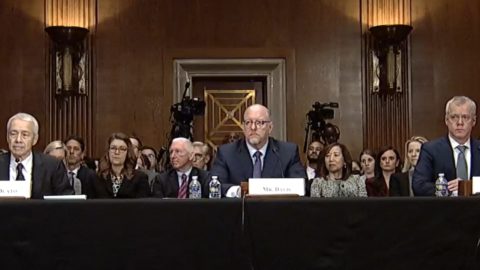Programming Note: Unless someone misbehaves, Cost Curve will be off tomorrow. Back Monday. If you need extra Cost Curve content over the weekend, I sat down with Incubate’s John Stanford for a fun conversation on his “Making Medicine” podcast. Available wherever podcasts are sold.
Lawmakers may not be entirely ready, but it’s pretty clear that everyone else is positioning themselves for a legislative battle royale over patent reform.
I know, I know. That’s not a particularly novel read of the landscape, but this week has delivered some worthwhile overviews of where the various partisans stand.
I’ve written before on the way that Arnold Venture-funded researchers have steadily built a base of publications to support policy reforms, this week brought a “Viewpoint” in JAMA that begins to apply some of that research base to policy ends.
The article, by Harvard PORTAL’s Aaron Kesselheim and a Boston University law professor, is a both-barrels attack on the PREVAIL Act, which would sand down some of the rough edges of the Patent Trial and Appeals Board.
The JAMA piece starts with the same assumption that all pro-reform pieces take, which is that there is systematic abuse of the patent system. The other side of that argument was laid out in a STAT op-ed by Lilly’s CSO, Dan Skovronsky, who argues that a lot of the usual boogeymen here are the product of myth, not fact.
This isn’t the last we’ll hear of this, and I’m hoping that we’ll get more perspective on this one, especially from folks who have been in the middle of things and been hurt — or not! — by the current environment in a way that can be traced back to a specific legal failing.
Earlier in the summer, the “big three” PBMs dropped what was positioned as the definitive rebuttal against claims that they act in ways that are anticompetitive.
Written by the University of Chicago’s go-to guy for defending monopolists — Dennis Carlton, who has made an estimated $100 million-plus in that niche — the report has its own vanity website and everything.
The Carlton Report was a 17-page effort, and it had some major issues that 46 Brooklyn picked apart in convincing fashion.
The report was also at the core of the lawsuit that the three PBMs filed against the FTC. Whenever the lawyers needed an evidentiary point, they dropped in a footnote referencing to the Carlton Report. There ended up being seven cites back to the report.
I present all of this as prelude, because, at some point in the last week or two, the companies pulled down the original Carlton Report and uploaded a far more mammoth version of the report weighing in at 127 pages.
I’m not the guy to go at the content of the report. I assume Antonio Ciaccia and his folks have seen the bat signal.
Instead, I’ll just wonder aloud: what’s going on with the switcheroo?
Why rush out a truncated version of the report that’s missing key data, only to flush it down the memory hole a few weeks later? And why build an entire lawsuit around the skeletal version rather than waiting for the final effort?
Right now, if you read the lawsuit, the citations to the Carlton Report are all meaningless, pointing to page numbers in a version of the document that no longer exists. I haven’t seen an update in the court docket. It all feels sloppy.
My thesis is that this is probably more evidence that the lawsuit against the FTC wasn’t designed to be legally meaningful but was, rather, a rushed shot across the bow of the FTC.
I wondered at the time of the filing if the legal action was less of a serious exploration of the legal issues and more of a way of muddying the waters and maybe staying the FTC’s hand. (If so: it didn’t work. The FTC filed its big PBM lawsuit within a week of the PBM effort.)
In short, the Carlton Report and the lawsuit it props up feel less like thoughtful data analysis and legal strategy and more … like public relations.
Look, as a PR guy, I can respect that. I’m just not sure that’s how the PBMs get themselves out of the current predicament.
While the constitutional arguments against the IRA are going to get their day in court, I remain most interested in the arguments that suggest that CMS is implementing the law in a way that’s a bit untethered from the actual legislation. Novo Nordisk is the standard-bearer for that one, objecting to the fact that CMS lumped a whole bunch of its insulins together as one product for the purposes of the law. Novo outlined its thinking in a brief this week … I’ll be super-curious about the oral arguments here.
I listened to the STAT Summit interview of former Trump health policy heavyweight Joe Grogan yesterday, and while I’m confident that I understand what Joe thinks the Republicans should do, I’m not sure anyone — Joe included — knows what Trump wants to do. But Grogan does have a good frame for all of this: if Trump wins, next year will be about tax reform, and understanding where drug pricing, ACA, etc. falls within that universe is probably going to be important.
This NEJM piece by the Harvard PORTAL folks is going to get a lot of eyeballs. It’s an overview of the first round of price controls, and it includes a helpful chart comparing prices along with a little shade thrown at the idea that patients might get soaked. That’s a dangerous position: some patients will absolutely get soaked. Maybe it won’t be that many, maybe it won’t be that bad, but this is a concept that was sold on universal benefit, not not-so-bad effects.
The Maryland PDAB’s next milestone comes next week when a key committee of the General Assembly votes on the PDAB’s plan for imposing “upper payment limits” on certain medicines.
Thanks for reading this far. I’m always flattered when folks share all or part of Cost Curve. All I ask is for a mention or tag. Bonus points if you can direct someone to the subscription page.





